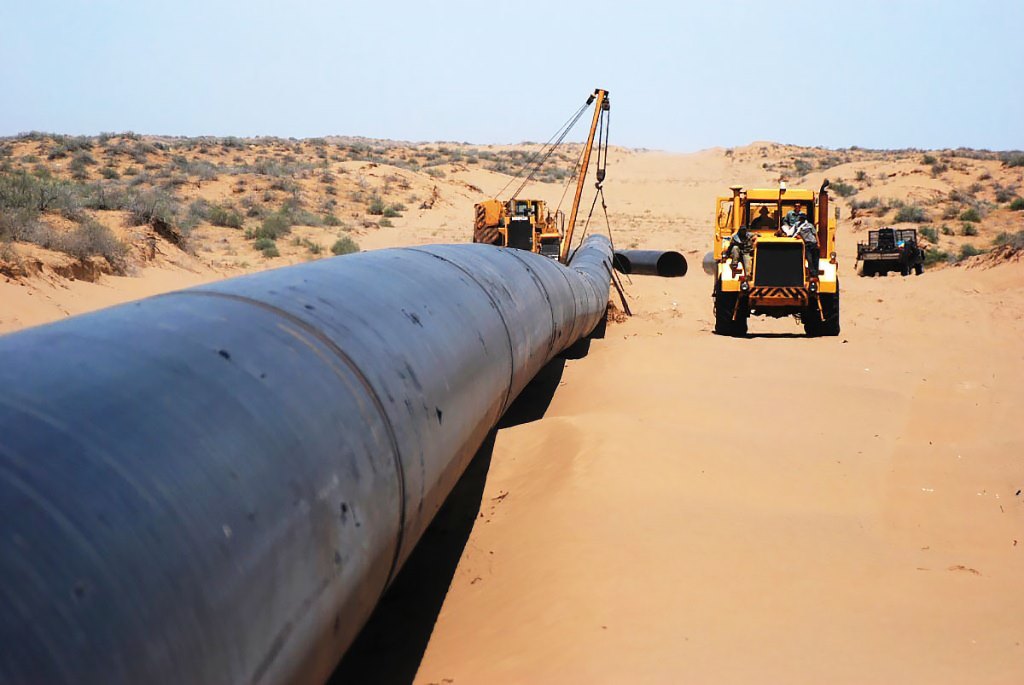Construction of the first facility of the Tajik trunk of the Turkmenistan-China gas pipeline is reportedly nearing completion.
The first deputy head of Open Joint-Stock Company (OJSC) Tojiktransgaz (Tajik state natural-gas distributor), Shavkat Shoimzoda, told reporters in Dushanbe today that construction of the first tunnel of the Tajik section of the Turkmenistan-China gas pipeline is reportedly nearing completion.
“Construction of the Tajik section of the Turkmenistan-China gas pipeline network will be carried out in three stages. The implementation of the first stage of the project is currently under way. This stage provides for construction of several tunnels,” said Shoimzoda. “Construction of the first 1,560-meter tunnel is nearing completion.”
According to him, they plan to begin construction of four other tunnels during the second half of this year.
The construction of the Tajik trunk of the natural gas pipeline running from Turkmenistan to China is expected to be completed in five years, in 2024.
Recall, the construction of the Tajik section of the Turkmenistan-China gas pipeline began in January last year.
CNPC’s subsidiary, Trans-Asia Gas Pipeline Company Ltd (Trans-Asia Gas), and Tojiktransgaz in March of 2014 signed an agreement on launching a joint venture for construction and operation of the gas pipeline.
Tajik President Emomali Rahmon and visiting Chinese President Xi Jinping attended the construction commencement ceremony of the Tajikistan section of Line-D of the China-Central Asia Gas Pipelines on September 13, 2014. The ceremony took place in the Roudaki district.
Line D is the fourth in the pipeline network. The current pipeline network comprising lines A, B and C passes through Uzbekistan and Kazakhstan before reaching China’s western Xinjiang province.
In November 2011, Ashgabat agreed to send an additional 25 billion cubic meters/year of gas to China, bringing total volumes to 65 billion cu m/year by 2020. Some of the additional gas supplies would come from the supergiant Galkynysh gas field in Turkmenistan.
The latest agreement with Tajikistan was signed in Dushanbe in March of 2014. A broad agreement for the project was then signed with Uzbekistan, Tajikistan and Kyrgyzstan during President Xi Jinping’s visit to Central Asia in September 2013.
With a length of only 1,000 kilometers, Line D will be the shortest section of the CACGP network. The pipeline, which at full capacity will carry 30bn cubic meters of natural gas per year, runs from Turkmenistan’s giant gas fields all the way to the Chinese border through Uzbekistan, Tajikistan and Kyrgyzstan. Works at Line D kicked off in September and are now scheduled to wrap up in 2020, although initially the completion date was set for 2016.
Among all countries the pipeline travels through, Tajikistan has the longest section of about 410 kilometers.
In Tajikistan, the gas pipeline will run through Tursunzoda, Shahrinav, Hisor, Roudaki, Vahdat, Fayzobod, Nourobod, Rasht and Lakhsh (formerly Jirgatol) to Kyrgyzstan’s border.
Tajikistan will serve only as a transit nation and will not be eligible to tap the gas for its own needs. Tajik officials say the project will generate more than $3 billion worth of investments in Tajikistan.
Tajikistan reportedly expects a total income of $3.7bn in transit fees and taxes from the Tajik trunk of "Line D" of the Central Asia–China gas pipeline (CACGP) over 32 years. The income of the Tajik-Chinese operator Trans-Tajik Gas Pipeline is expected to be $15bn over 32 years, and of this amount, Tajikistan will receive $1.2bn in the form of taxes and $2.5bn as dividends.







